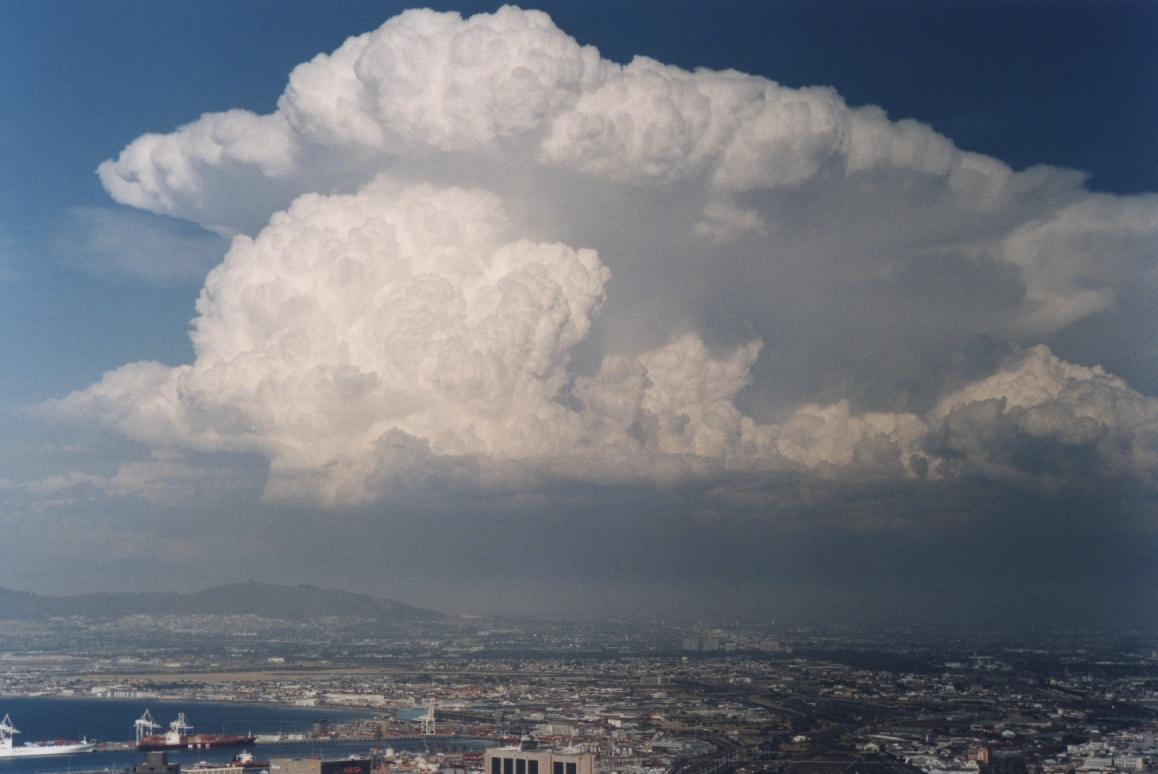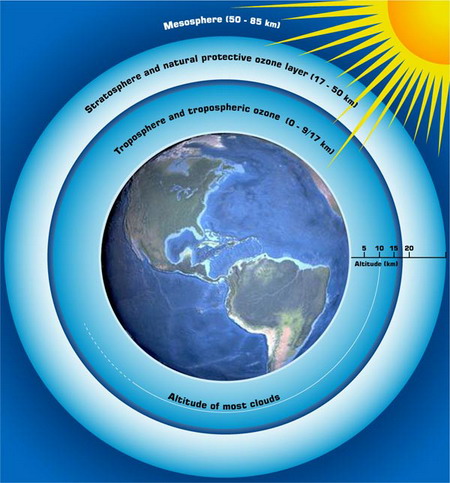For Activity 1, we had to measure the "heat absorbed" by 3 different materials in pie pans. The materials were water, dirt, and sand. Our results were normal and as expected. The water rose and fell in temperature the slowest. Dirt and sand were about equal, both absorbing heat and cooling off fairly quickly. No material behaved out of the normal.
For Activity 4, we had to measure the heat inside 3 different "atmospheres". These "atmospheres" were bottles with different environmental qualities to them. The different materials played as different roles. The bottle played as the atmosphere, the paint played as clouds, and the water played as itself, or if you will an ocean/lake. The results were really suprising. Our bottle had all 3 of these qualities mentioned, and the temperature barely fluctuated at all. The temperature inside rose in the beggining at a steady pace upwards, but after roughly halfway through, it stopped. There was no change at all. I figured the temperature would rise inside because it was being baked by the light, or "heat source". The "clouds" must have done a good job reflecting the light.
These climate activities do show Earth's climate on a small scale fairly well. The big picture, however, is still way different in the actual breakdown of climate effects. Overall, small variables, small results. My climate topic is lightning. This would be a VERY hard topic, impossible really, to develop in "the lab". The only experiment you could do would be to test on particles in clouds getting charges on them, both positive and negative (recipe for lightning). No one could make a lightning cloud in the lab.
Wednesday, October 27, 2010
Sunday, October 17, 2010
CLIMATE CHANGE
Climate change brings numerous questions with it. What will happen when the Earth is warmer? How will the ecosystem change if there is rapid warming? If the ecosystem changes, how will agriculture be impacted? If agriculture is impacted, what will happen the supply of food? How will climate change ultimately change human society?
"Frequent Questions." US Environmental Protection Agency, 19 Aug. 2010. Web. 17 Oct. 2010.
Rising global temperatures is a factor of climate change. The current scientific models availiable predict an increase of "3 degrees Celsius (5.4 degrees Fahrenheit) by 2100". With increased temperatures, there is drawbacks. Ice in the polar regions of the world will melt faster, and thus increasing the sea level. With increased sea level, many islands and low-lying regions of the world will flood. Hurricanes will also be stronger due to the would be increase of the sea temperature.
Ellis, Jessica. "What Are Some Predictions for Future Climate Change?" Wisegeek.com. 9 Sept. 2010. Web. 17 Oct. 2010.
Sunday, October 10, 2010
SEWER TREATMENT
The sewer treatment plant was a unique trip for me. The real shocker was that the smell wasn't really that bad. You would assume that with almost all of the sewage in the Eaton Rapids area going through the plant, the smell would be atrocious. At the plant, I learned that the water goes through multiple steps throughout the plant. Some of these steps catch plastics and other things people shouldn't flush down the toilet. Most of the other processes let the heavy articles in the water either sink to the bottom, or float to the top. At these locations they are collected and dealt with appropriately. Another suprising thing to me was the amount of work microrganisms do to the water to clean it. This really shows how much we depend on mother nature in our everyday lives.
I didn't know a recycling plant for 1 and 2 plastics existed at that facility. My family goes through a lot of plastic bottles, especially at home. I might be able to get them to put it into a special container to deposit at the facility. My only complaint was that it could be more organized.
I didn't know a recycling plant for 1 and 2 plastics existed at that facility. My family goes through a lot of plastic bottles, especially at home. I might be able to get them to put it into a special container to deposit at the facility. My only complaint was that it could be more organized.
Friday, October 1, 2010
Posting on City Talk
- Mrs. Birerley, she was a project manager
- The city upgraded the storm drain pipes to include filter for the storm water before it goes directly into the Grand.
- The water will be mostly rid of the oil, grease, and liter from the runoff of the pavements.
- The quality of our test will most likely improve will the reduction of runoff pollutants.
- I didn't know that they added parking lots that absorbed the water before it entered the Grand. Also I'm interested in the fact they said about bringing the "rapids" back into Eaton Rapids.
- My biobotte is doing very well. It has grown plants, which I didn't expect to happen. The phosphates aren't really affecting the bottle too much right now, time will tell though.
- For my action project we are doing it on pollution of water and solutions to it.
- Honestly, we have barely started.
Subscribe to:
Posts (Atom)
LIGHTNING
Lightning strikes all over the world, very numerously in fact. Satellite data suggests there are "3 million lightning flashes worldwide per day". It can happen anywhere there is a storm cloud brewing.(4)

Storm clouds are generally cumulonimbus clouds. These are massive, towering clouds often reaching high in the atmosphere. They usually form when a cold front meets a warm front. The air also has to be moist enough for the clouds to form. Inside the clouds there are strong updrafts. This is the start of how lightning is made. (3)


The exact science how lightning is made is a mystery. There a few theories, but perhaps the most popular one involves ice particles. When a cumulonimbus cloud reaches a precipitation capacity, water is carried up the cloud by the updrafts. Here the water collides with ice particles in the upper portions of the cloud. These collisions supposedly create a charge, which the negative portion going towards the bottom of the cloud and the positive towards the top. The difference in charge becomes too great, and thus, lightning is born. (1)


To summarize, for lightning to exist, there must be a cumulonimbus cloud. Inside the water must collide with enough ice particles to make a great enough charge. If a cumulonimbus cloud produces lightning, then it is classified as a "thunderstorm". (3)


On a side note, lightning ALWAYS exists with thunder. (1)
Technology does exist that detects lightning, but it is hard to predict lightning, for it is random. The detected lighting is almost always CG (cloud-to-ground) Lightning detectors have been in place in the US since the 70s. These antennae detectors are hundreds of kilometers apart and detect the radio-frequency pulses that lightning gives off. The location is where the vectors intersect. Since 1994, this system is one combined network run by Global Atmospherics Inc. These instruments provide lightning strike indicators to provide early storm intelligence and give people an early heads up. (4)

It is estimated that $4-5 billion damages occur each year because of lightning. Money spent to safeguard sensitive equipment from lightning damages is also enormous. Between the years 1979-2008, lightning killed an average of 58 people each year. Lightning can travel through a power line to an electrical appliance, and anyone using that appliance. It can also travel through plumbing pipes and water to a person in contact with either of those, examples primarily being shower and bath. One out of 5 lightning strike victims die, and 70% of the lucky survivors suffer serious long-term after effects. (4)

Lightning also affects the environment around us greatly. Forest fires are generally caused by lightning strikes to a dense group of trees. Power outages can be traced back to lightning hitting a power grid. However, not all the affects of lightning are negative. Lightning maintains the Earth's electricial balance. It returns the negative charges back to the Earth. Lightning also produces o-zone, which is necessary for the Earth's protection against the sun's harmful UV rays. (1)

1) "About Lightning..." http://www.nssl.noaa.gov/. 8 Feb. 2010. Web. 28 Oct. 2010
2) Bellante, Anthony. "How Lightning Is Formed." http://www.helium.com/. Web. 28 Oct. 2010
3) "Cumulonimbus Clouds." University of Illinois. http://www.atmos.uiuc.edu/. 7 Aug. 2010. Web. 28 Oct. 2010
4) Henson, Bob. "Lightning:FAQ." http://www.ucar.edu/ 5 Apr. 2000. Web. 28 Oct. 2010
http://www.maniacworld.com/lightning-strike-in-tree.html
http://www.nssl.noaa.gov/faq/faq_ltg.php/
http://www.helium.com/items/1522307-how-lightning-is-formed
http://www.youtube.com/watch?v=kLJ6oqToKrc&feature=related

Storm clouds are generally cumulonimbus clouds. These are massive, towering clouds often reaching high in the atmosphere. They usually form when a cold front meets a warm front. The air also has to be moist enough for the clouds to form. Inside the clouds there are strong updrafts. This is the start of how lightning is made. (3)


The exact science how lightning is made is a mystery. There a few theories, but perhaps the most popular one involves ice particles. When a cumulonimbus cloud reaches a precipitation capacity, water is carried up the cloud by the updrafts. Here the water collides with ice particles in the upper portions of the cloud. These collisions supposedly create a charge, which the negative portion going towards the bottom of the cloud and the positive towards the top. The difference in charge becomes too great, and thus, lightning is born. (1)


To summarize, for lightning to exist, there must be a cumulonimbus cloud. Inside the water must collide with enough ice particles to make a great enough charge. If a cumulonimbus cloud produces lightning, then it is classified as a "thunderstorm". (3)


On a side note, lightning ALWAYS exists with thunder. (1)
Technology does exist that detects lightning, but it is hard to predict lightning, for it is random. The detected lighting is almost always CG (cloud-to-ground) Lightning detectors have been in place in the US since the 70s. These antennae detectors are hundreds of kilometers apart and detect the radio-frequency pulses that lightning gives off. The location is where the vectors intersect. Since 1994, this system is one combined network run by Global Atmospherics Inc. These instruments provide lightning strike indicators to provide early storm intelligence and give people an early heads up. (4)

It is estimated that $4-5 billion damages occur each year because of lightning. Money spent to safeguard sensitive equipment from lightning damages is also enormous. Between the years 1979-2008, lightning killed an average of 58 people each year. Lightning can travel through a power line to an electrical appliance, and anyone using that appliance. It can also travel through plumbing pipes and water to a person in contact with either of those, examples primarily being shower and bath. One out of 5 lightning strike victims die, and 70% of the lucky survivors suffer serious long-term after effects. (4)

Lightning also affects the environment around us greatly. Forest fires are generally caused by lightning strikes to a dense group of trees. Power outages can be traced back to lightning hitting a power grid. However, not all the affects of lightning are negative. Lightning maintains the Earth's electricial balance. It returns the negative charges back to the Earth. Lightning also produces o-zone, which is necessary for the Earth's protection against the sun's harmful UV rays. (1)

1) "About Lightning..." http://www.nssl.noaa.gov/. 8 Feb. 2010. Web. 28 Oct. 2010
2) Bellante, Anthony. "How Lightning Is Formed." http://www.helium.com/. Web. 28 Oct. 2010
3) "Cumulonimbus Clouds." University of Illinois. http://www.atmos.uiuc.edu/. 7 Aug. 2010. Web. 28 Oct. 2010
4) Henson, Bob. "Lightning:FAQ." http://www.ucar.edu/ 5 Apr. 2000. Web. 28 Oct. 2010
http://www.maniacworld.com/lightning-strike-in-tree.html
http://www.nssl.noaa.gov/faq/faq_ltg.php/
http://www.helium.com/items/1522307-how-lightning-is-formed
http://www.youtube.com/watch?v=kLJ6oqToKrc&feature=related